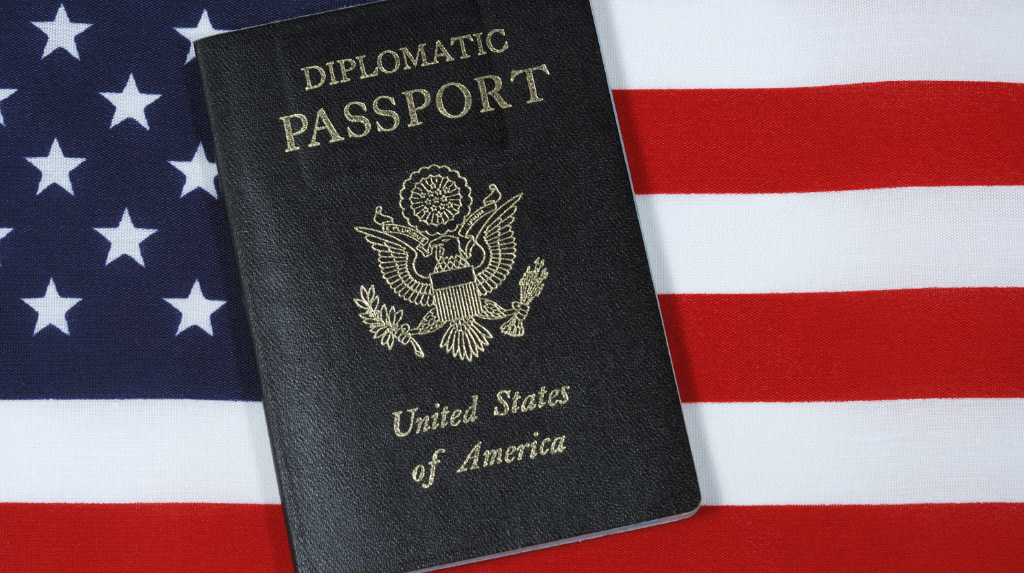The L-1 visa is a type of U.S. work visa that allows multinational companies to transfer employees from their offices abroad to the United States temporarily. This visa is designed for key personnel, helping companies maintain their operations in the U.S. while also supporting their global business presence. In this guide, we will explain the L-1 visa in detail, covering who is eligible, the costs and processing time, and how to apply.
Types of L-1 Visas:
There are two main categories of L-1 visas:
- L-1A Visa: This is for managers and executives being transferred to a U.S. office. These employees typically oversee a significant part of the organization or manage critical functions within the company.
- L-1B Visa: This is for employees with specialized knowledge, such as an advanced understanding of the company’s products, technology, processes, or services. These workers are essential for sharing unique expertise within the U.S. office of the same company.
L-1 Visa Eligibility: Who Can Apply?
To qualify for an L-1 visa, both the employee (applicant) and the employer (sponsor) need to meet certain requirements.
Employee (Applicant) Requirements:
- Employment with a Qualifying Organization: The applicant must work for a multinational company that has a connection to the U.S. employer (such as being a parent company, subsidiary, branch, or affiliate).
- Position Requirements:
- For the L-1A visa, the employee must be coming to the U.S. to work in a managerial or executive role.
- For the L-1B visa, the employee must possess specialized knowledge crucial to the company.
- One Year of Employment: The employee must have worked for the foreign employer for at least one year in the last three years before applying for the L-1 visa.
Employer (Sponsor) Requirements:
- Qualifying Relationship: The U.S. employer must have a qualifying relationship with the foreign company, such as a parent, subsidiary, or branch office connection.
- Business Activity: The U.S. employer must be actively doing business in the U.S. and have a physical office where the employee will work. If the U.S. office is new, there must be a plan in place to support the employee’s role.
- Employment Offer: The U.S. employer must offer the job and agree to sponsor the visa application.
L-1 Visa Costs
The cost of obtaining an L-1 visa can vary based on several factors, such as whether you are filing for a new petition or an extension, and whether you request premium processing.
- The filing fee for Form I-129 (Petition for Nonimmigrant Worker) is typically $1385 ($695 for smaller employers or nonprofits).
- An anti-fraud fee of $500 may be required in some cases.
- If you opt for premium processing, there is an additional fee of $2805.
Processing Time
The processing time for an L-1 visa can differ depending on the service center handling the petition and the complexity of the case. In general, L-1 visa processing times are quicker compared to other work visa categories.
- Premium Processing is available for an extra fee, and USCIS typically processes applications within 15-45 calendar days.
How to Apply
The L-1 visa application process involves steps for both the employer and the employee.
Employer’s Role:
- File Form I-129: The U.S. employer files this petition with USCIS, providing details about the employee’s position, the relationship between the U.S. and foreign office, and the employee’s qualifications.
- Pay Filing Fees: The employer pays all the applicable filing fees.
Employee’s Role:
- Complete DS-160: After the Form I-129 is approved, the employee must fill out the DS-160 form online to apply for a nonimmigrant visa.
- Pay Visa Application Fee: The employee pays the required visa application fee.
- Schedule and Attend Visa Interview: The applicant schedules an interview at the U.S. Embassy or consulate in their home country. The interview will require supporting documents, such as a valid passport and proof of employment.
Frequently Asked Questions
What is the difference between the H-1B and L-1 visa?
The H-1B visa is for individuals with specialized skills sponsored by a U.S. employer, while the L-1 visa is for employees of multinational companies who are being transferred to a U.S. office. The H-1B visa has a lottery system, whereas the L-1 visa does not. Additionally, L-1 visa holders can only work for the sponsoring company, while H-1B holders can change employers.
Is the L-1 visa lottery-based?
No, the L-1 visa is not subject to a lottery like the H-1B visa. As long as both the applicant and employer meet the requirements, the L-1 visa application can proceed without a lottery.
Is the L-1 visa better than the H-1B visa?
The L-1 visa is better for employees of multinational companies who are transferring to the U.S. It does not involve a lottery, and spouses of L-1 holders can work in the U.S. without restrictions. The H-1B visa, on the other hand, is suitable for specialized occupations and may offer more job flexibility.
What are the benefits of the L-1 visa?
The L-1 visa offers several advantages, including the ability to transfer employees between offices, faster processing times, no annual cap or lottery, and work authorization for spouses (L-2 visa holders). It also allows the possibility of applying for a green card (permanent residency).
How long can you stay in the U.S. on an L-1 visa?
The length of stay on an L-1 visa depends on the category:
- L-1A visa holders can stay for up to seven years.
- L-1B visa holders can stay for up to five years.
Can I apply for a green card on an L-1 visa?
Yes, L-1 visa holders can apply for a green card through adjustment of status while maintaining their temporary visa status. The L-1 visa is considered a dual-intent visa, which allows holders to seek permanent residency while still working in the U.S.
Can your spouse work on an L-1 visa?
Yes, spouses of L-1 visa holders can apply for an L-2 visa, which automatically grants them work authorization in the U.S. However, the spouse’s work authorization is tied to the L-1 visa holder’s employment status.
L-1 Visa Denials and RFEs
L-1 visa denials can occur due to various reasons such as insufficient evidence of qualifying relationships between entities or failure to meet job requirements. If a Request for Evidence (RFE) is issued, applicants must provide additional documentation promptly to support their case. In cases of denial or RFE, it is advisable to consult with immigration experts who can guide applicants through appealing processes or reapplying effectively.
L-1 Visa for New U.S. Offices
When multinational companies establish new offices in the U.S., they can utilize the L-1 visa for transferring employees essential to setting up operations. This pathway requires demonstrating that the new office will be viable and operational within a reasonable timeframe. Special rules apply specifically for L-1A holders transferring to new offices; they may initially receive a shorter duration of stay but can later extend it based on operational success.
L-1 Visa for U.S. Startups
Startups can also benefit from the L-1 visa by bringing in key employees who possess the critical skills necessary for launching operations in the U.S. To qualify as a “qualifying organization,” startups must show that they have a legitimate business structure capable of supporting international transfers.
The L-1 visa provides an excellent option for multinational companies to transfer key employees to the U.S. It allows both businesses and workers to benefit from the opportunities the U.S. offers, with various advantages including no annual cap, faster processing, and the ability for spouses to work. By understanding the requirements and following the application process, employees and employers can make the most of this valuable visa option.
Travel and Work Limitations
L-1 visa holders have the ability to travel in and out of the United States, but there are specific considerations to keep in mind. While they can leave the U.S. for business or personal reasons, they must ensure that their visa status remains valid upon re-entry. The L-1 visa is employer-specific, meaning holders are authorized to work only for the sponsoring employer in the designated role. Any change in employment or job role typically requires a new application or amendment to their existing visa.
L-1 visa holders can change employers, but this often involves transitioning to a different visa category unless the new employer is also a qualifying organization with a relationship to the original employer. In such cases, the new employer can file a petition for an L-1 transfer, allowing the individual to continue working in the U.S. without interruption.
L-1 Visa Denial Trends and How to Improve Approval Chances
Trends in L-1 visa denials often stem from insufficient documentation or failure to meet eligibility criteria. Common reasons include lack of proof of qualifying employment abroad or inadequate demonstration of the managerial or specialized knowledge required for the position. To avoid these pitfalls, applicants should focus on providing comprehensive documentation that clearly outlines their qualifications and employment history. Increasing approval chances can also be achieved by ensuring that all forms are completed accurately and submitted on time.
Legal assistance plays a significant role in navigating the complexities of immigration law, helping applicants understand requirements and prepare their petitions effectively. Experienced immigration attorneys can provide insights into best practices and assist in compiling necessary evidence.
Common Mistakes in Applications
When filing an L-1 visa petition, several mistakes can lead to denials or delays. Common errors include failing to demonstrate continuous full-time employment with the foreign company or not adequately proving the qualifying relationship between the foreign and U.S. entities. Additionally, vague job descriptions that do not clearly articulate managerial responsibilities or specialized knowledge can hinder approval.
To ensure a smooth application process, it is crucial to follow best practices such as double-checking all documentation for accuracy, providing detailed job descriptions, and including letters from supervisors that affirm qualifications and responsibilities. Thorough preparation can significantly enhance the likelihood of a successful outcome.
L-1 Visa and Labor Market Impact
The L-1 visa has a notable impact on the U.S. labor market by facilitating the transfer of skilled workers from multinational companies. This program enables companies to bring in employees with specialized knowledge or managerial experience, which can contribute to innovation and productivity within U.S. operations. By allowing companies to access global talent, the L-1 visa supports economic growth and competitiveness.
Concerns about the L-1 visa’s effect on American workers often arise, particularly regarding job displacement. However, studies suggest that rather than taking jobs away from U.S. workers, L-1 visa holders typically fill roles that require unique skills not readily available in the domestic labor market. This helps companies maintain their competitive edge while also creating opportunities for local workers through expanded business operations.
Alternatives to the L-1 Visa
For foreign workers seeking employment in the U.S., several alternative visa options exist beyond the L-1 visa. The H-1B visa is one such option, designed for individuals with specialized skills sponsored by U.S. employers. Unlike the L-1 visa, which is specific to intra-company transfers, H-1B visas allow for greater flexibility regarding employer changes but come with annual caps and lottery systems.
The O-1 visa is another alternative for individuals with extraordinary ability in their field, whether it be arts, sciences, business, or athletics. Each visa category has its own eligibility requirements, benefits, and limitations, making it essential for applicants to assess which option aligns best with their professional situation and long-term goals.
How Law and Visas Can Help?
At Law and Visas, our team of expert immigration consultants is here to make your travel to the U.S. straightforward and successful. Whether you’re applying for an E-2 Visa or a TN Visa, we handle every step—from preparing your application to gathering the required documents.
Our Immigration Consultants and Lawyers ensure that your application meets the highest standards, with no details missed. We’ll also keep you informed throughout the process and coordinate with the immigration office or embassy on your behalf.
Law and Visas has a strong record of helping clients secure the visas/permits they need to visit the United States. You can call us today at +234 812 5505 986 to learn how we can help you.





